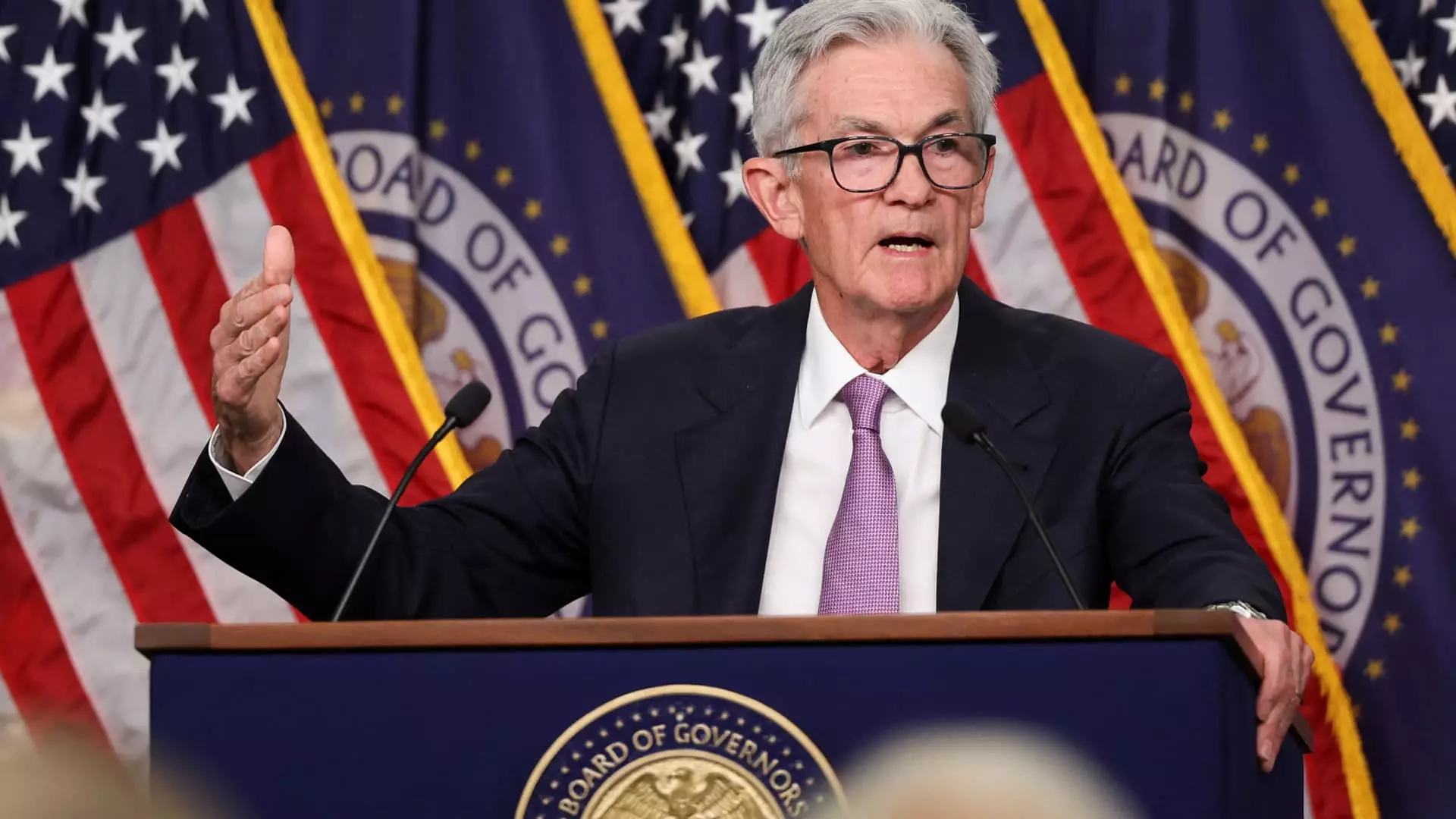The Federal Reserve’s decision to implement its second consecutive interest rate cut signals a strategic recalibration of its monetary policy in light of shifting economic conditions. Following the significant half-point reduction in September, the Federal Open Market Committee (FOMC) opted for a more measured 25 basis point cut, adjusting the benchmark overnight borrowing rate to a target range of 4.50% to 4.75%. This decision is pivotal, not only because it influences the financial landscape—impacting consumer debt instruments like mortgages, credit cards, and auto loans—but also in its broader implications for economic growth and inflation management.
Market observers largely anticipated this interest rate adjustment, as the Fed had signaled its intentions during previous meetings. Such predictability is essential for maintaining market stability; however, the unanimous support for this cut, unlike September’s decision—which saw dissent from a board member—suggests a growing consensus among policymakers regarding the necessary course of action. Governor Michelle Bowman’s agreement stands as a notable shift, reflecting a more unified stance as the Fed seeks to balance its dual mandate of fostering maximum employment while controlling inflation.
Moreover, the accompanying statement from the FOMC showcased nuanced changes in the Fed’s perspective on the economy. The committee noted that risks associated with achieving its inflation and employment targets are now “roughly in balance.” This is a significant shift from the previously stated “greater confidence,” indicating that while inflation remains a pressing concern, there is a concurrent focus on labor market stability. Such a pivot underscores the Fed’s adaptive strategy to mitigate risks from both inflationary pressures and labor market fluctuations, which may reflect ongoing uncertainties in the current economic climate.
The latest employment data illuminated a complex picture of the labor market. The increase of just 12,000 nonfarm payrolls in October points to a gradual easing of hiring conditions, despite overall low unemployment rates. The FOMC’s assessment identified these trends, noting a slight uptick in unemployment even amidst a generally solid economic expansion. GDP growth recorded at a 2.8% pace in the third quarter is robust yet less than anticipated, raising questions about the sustainability of growth as we head into the fourth quarter. Preliminary figures suggest further moderation, projecting around 2.4% growth which, while still good, hints at developing challenges.
The Fed’s “recalibration” statement comes against a backdrop of relatively stable but changing macroeconomic conditions. By shifting attention toward supporting the labor market alongside the inflation-control mandate, the committee reveals a discerning awareness of the delicate balance policymakers must navigate. The challenge now lies in whether the Fed can maintain this equilibrium while responding to external economic signals.
The political dynamics surrounding the recent Presidential election have introduced a layer of uncertainty to the Fed’s policy trajectory. The anticipated policy direction under President-elect Donald Trump—known for his aggressive stances on tariffs and immigration—could pose inflationary pressures that the Fed would need to contend with. However, Chair Jerome Powell emphasized that immediate monetary policy decisions will not be swayed by the imminent political changes, echoing the Fed’s historical commitment to maintaining independence from political influences.
This independence is crucial, particularly as analysts speculate about future cuts and the implications for the economy. The FOMC’s earlier indications suggest a roadmap that could include further cuts and a potential terminal rate of 2.9%—parameters that guide market expectations but aren’t set in stone.
Despite the Fed’s rate cuts, market responses have been somewhat incongruent. Treasury yields and mortgage rates have risen post-September, suggesting that market participants are not fully responding to the Fed’s easing measures. For instance, the 30-year mortgage rate has climbed nearly 0.7 percentage points to 6.8%, highlighting rising borrowing costs for consumers. This disconnect raises questions about market perceptions of the Fed’s ability to manage inflation over the longer term, particularly as the core inflation indicator remains elevated at 2.7%.
The Fed’s ambition to achieve a “soft landing” is fraught with complexities. Achieving a reduction in inflation without triggering a recession remains an elusive target. As the economic landscape evolves, the efficacy of the Fed’s strategies will be scrutinized, underscoring the importance of adaptive governance in a time of uncertainty.
The Federal Reserve’s recent rate cuts represent a strategic balancing act, aimed at fostering economic growth while curbing inflation. As the economic landscape evolves, its subsequent adjustments will be critical to ensuring stability in American financial systems and the broader economy. The path ahead remains a pivotal subject for both policymakers and market participants, as they navigate the apparent contradictions of growth amidst inflationary pressures.

Leave a Reply